7.16. WFS, WMS, TMS layers
NextGIS Web allows to add data from external sources using standard protocols: WFS, WMS, TMS.
Also, you can make a layer based on a PostGIS database.
7.16.1. WFS
WFS allows to get data published on third-party GIS servers (arcgis, geoserver etc), apply custom styles to them and add them to Web Maps.
First you need to create a WFS connection.
7.16.1.1. WFS connection
Click Create resource button and select WFS connection.
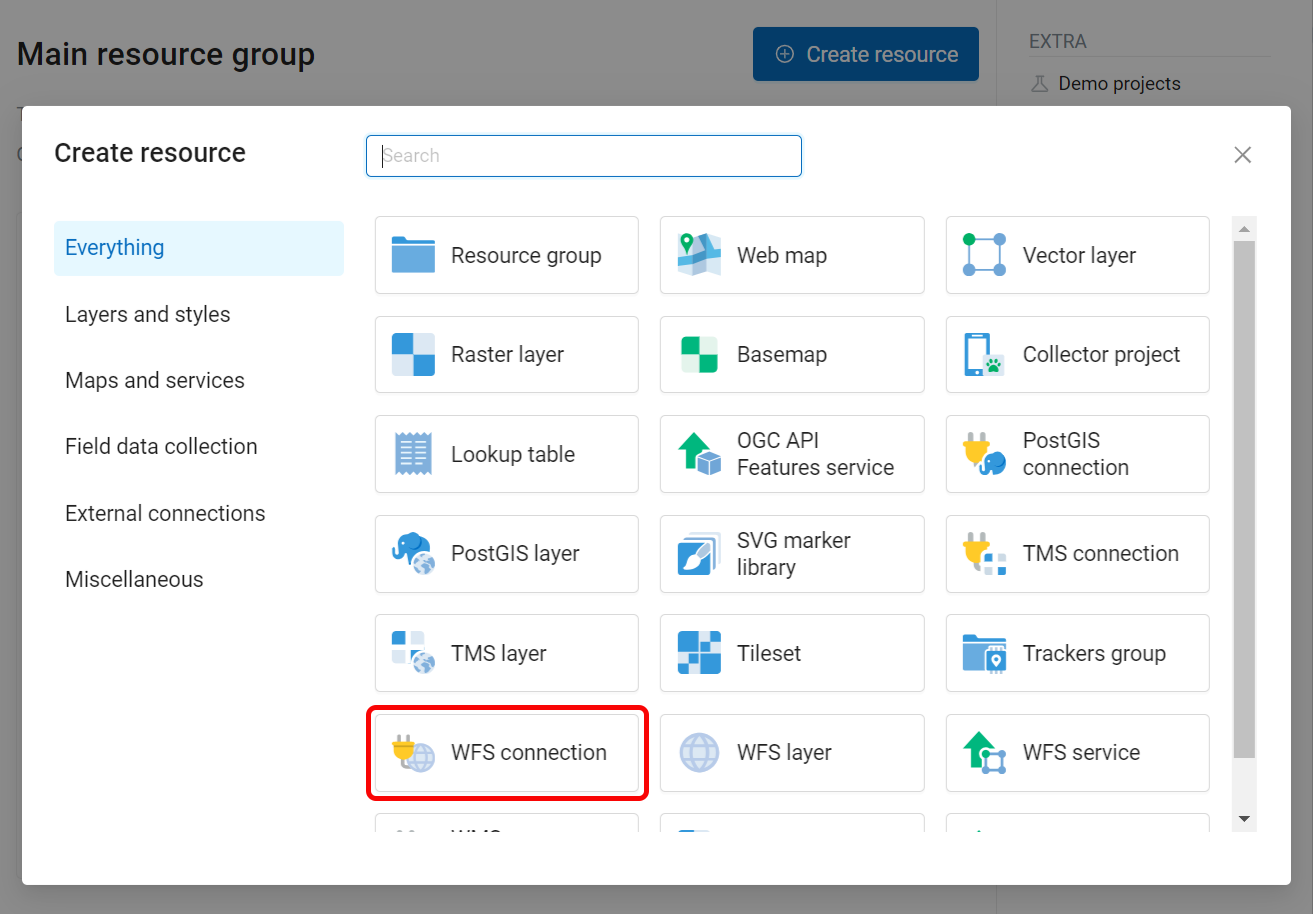
Pic. 7.179. Selecting “WFS connection” resource type
Next you can enter a custom name that will be displayed in the resource list.
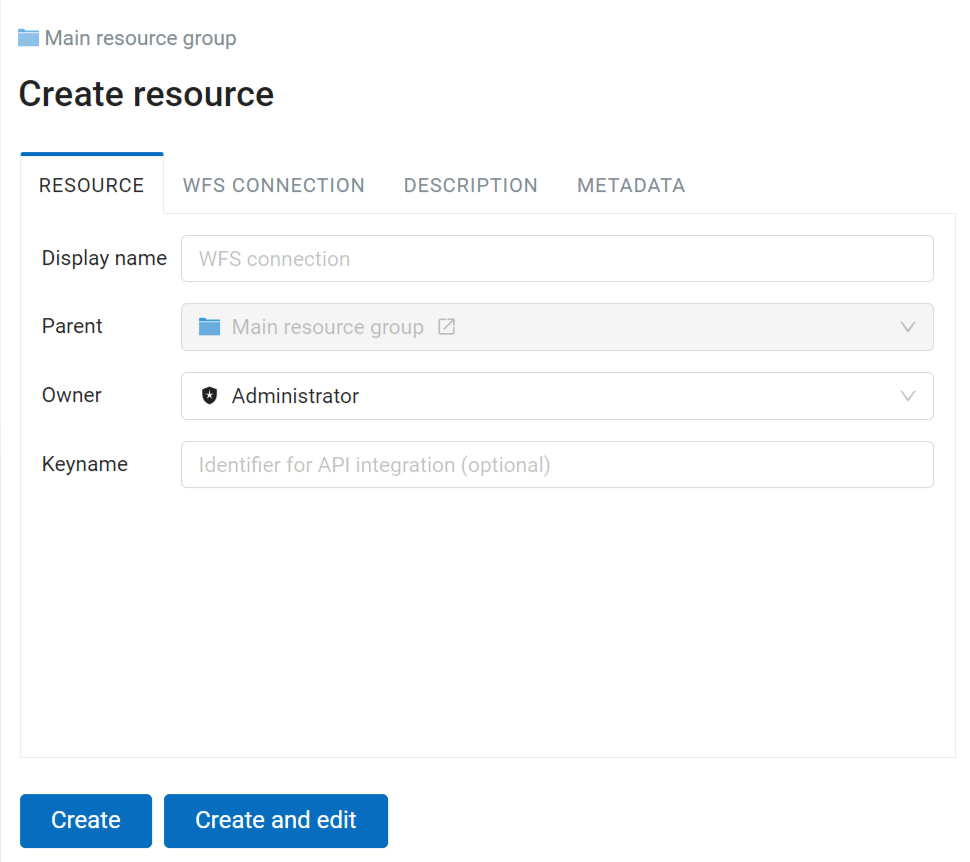
Pic. 7.180. Name for WFS connection
Also you can add Description and metadata.
On the “WFS connection” tab enter the parameters that will be used to connect to the WFS server providing the data:
URL
Username
Password
WFS version

Pic. 7.181. WFS connection settings
If the version you selected is not supported, you’ll get an error message after clicking Create:

Pic. 7.182. Error message for incorrect WFS version
Next you can create WFS layer resource.
7.16.1.2. WFS Layer
WFS Layer is added using an existing WFS connection. Select the resource type in the Create resource menu.

Pic. 7.183. Selecting “WFS layer” resource type
In the opened window in the “WFS layer” tab select the WFS connection you created. Next select the layer and the geometry field. SRID will be added automatically.
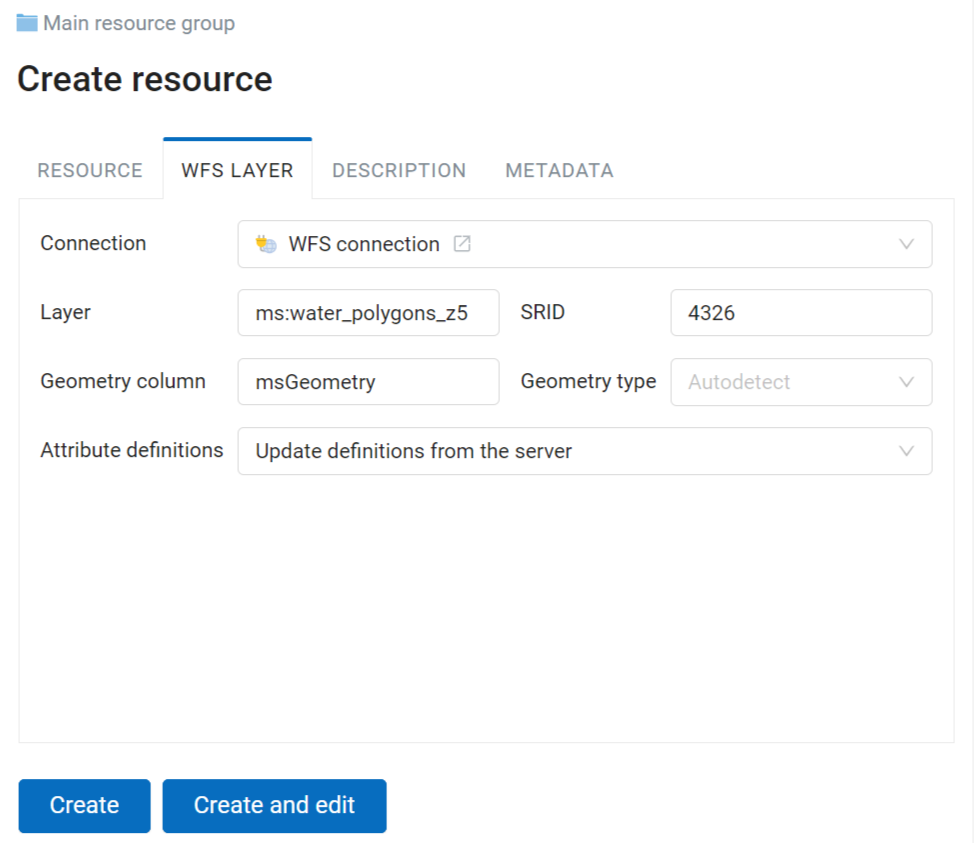
Pic. 7.184. WFS layer settings
On the “Resource” tab you can set a custom name for the resource. Also you can add Description and metadata.
To add a WFS layer to a Web Map, you need to create a style for it. You can create a default QGIS style or a custom QGIS or Mapserver style using “Create resource” menu.
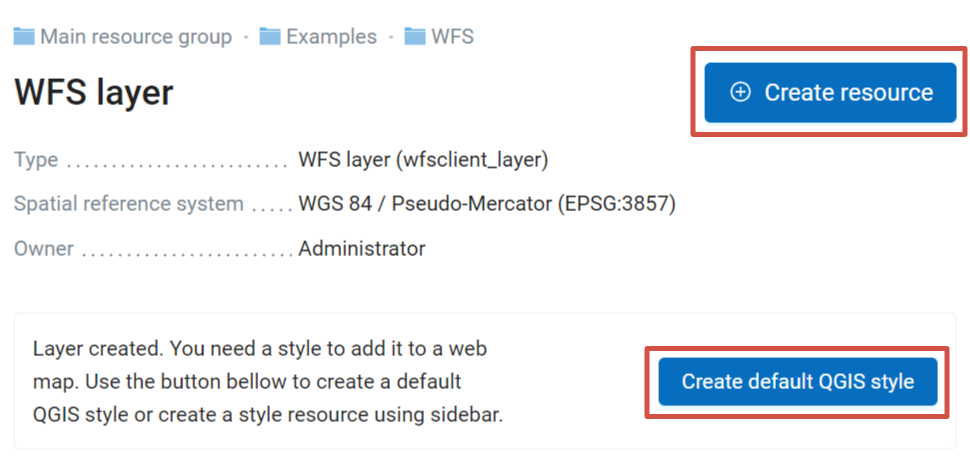
Pic. 7.185. Two ways to add a style to WFS layer
7.16.2. WMS
Note
Currently supported WMS versions are 1.1.1 and 1.3.0.
NextGIS Web is a WMS client. To connect a WMS layer you need to know its address.
WMS server should be able to serve it using a coordinate system EPSG:3857.
The code must be 3857, not 900913.
You can check if this coordinate system is available for a particular layer by making a GetCapabilites request to a server and examining the response.
7.16.2.1. WMS Connection
To add a WMS layer you need to create a resource called WMS connection. You may create a single connection for many layers. Click Create resource button and select WMS connection (see Pic. 7.186.).
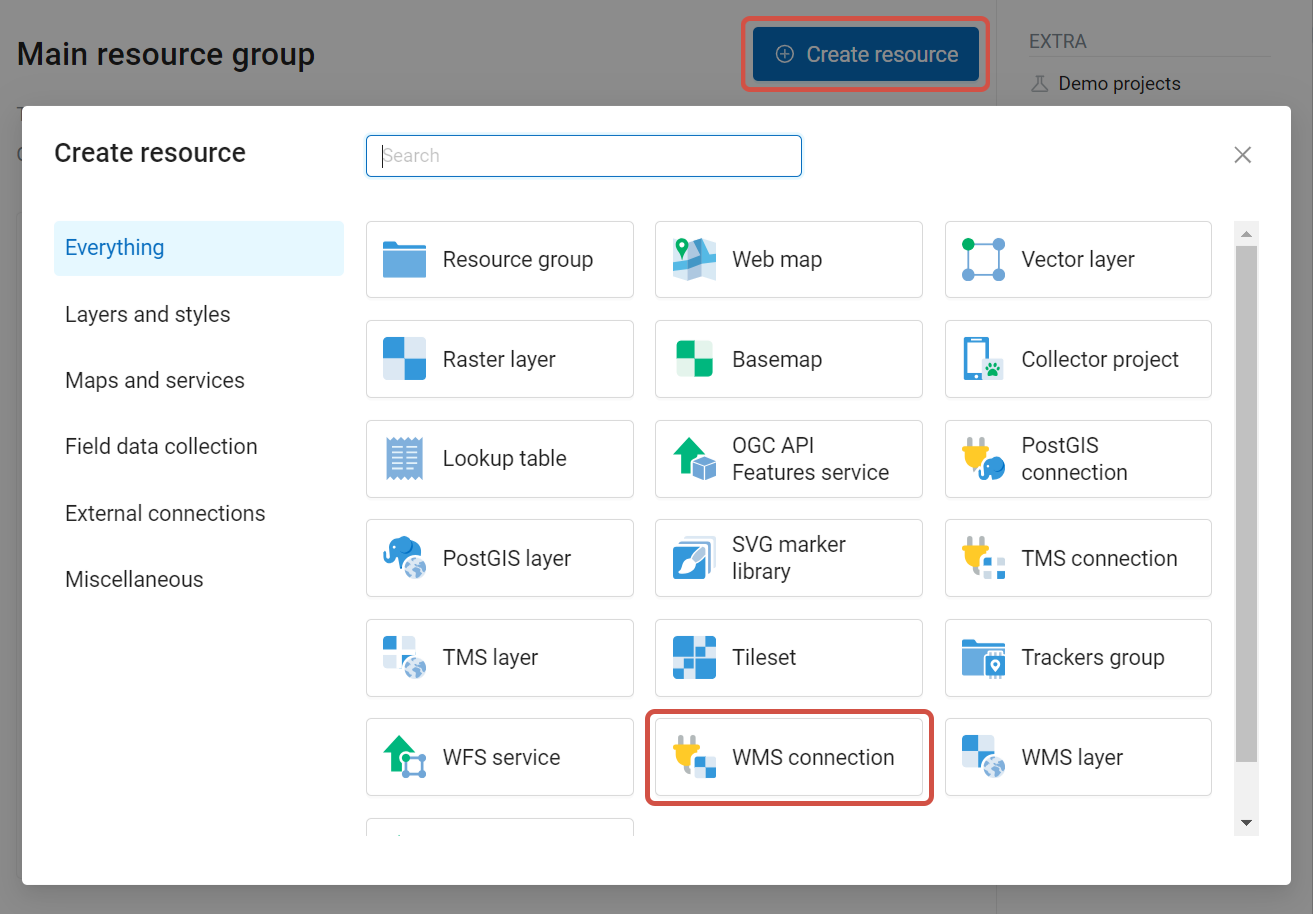
Pic. 7.186. Selecting “WMS connection” resource type
Create resource dialog for WMS connection is presented on Pic. 7.187.. Enter the name of the resource that will be displayed in the administrator interface. Not to be confused with layer name in a database. “Keyname” field is optional.
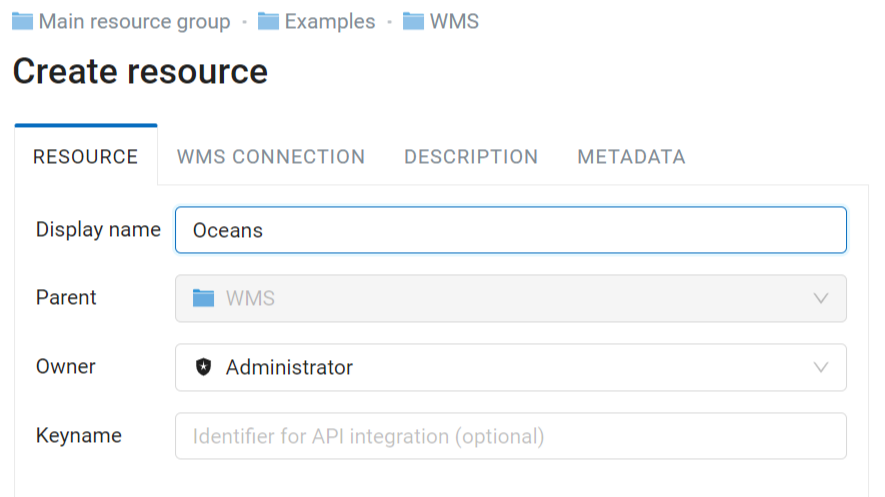
Pic. 7.187. Name for WMS connection
Also you can add Description and metadata.
Here enter the following WMS server connection parameters:
URL
Username
Password
Version of WMS protocol
Capabilities (manages GetCapabilities queries to the WMS Server)
URL field needs to be filled, others are used when necessary.

Pic. 7.188. WMS connection tab of Create resource dialog
After setting up all necessery parameters, click Create.
7.16.2.2. WMS layer
Now you can add WMS layers. Open the resource group where you want to create the layer. Click Create resource button and select WMS layer (see Pic. 7.189.).
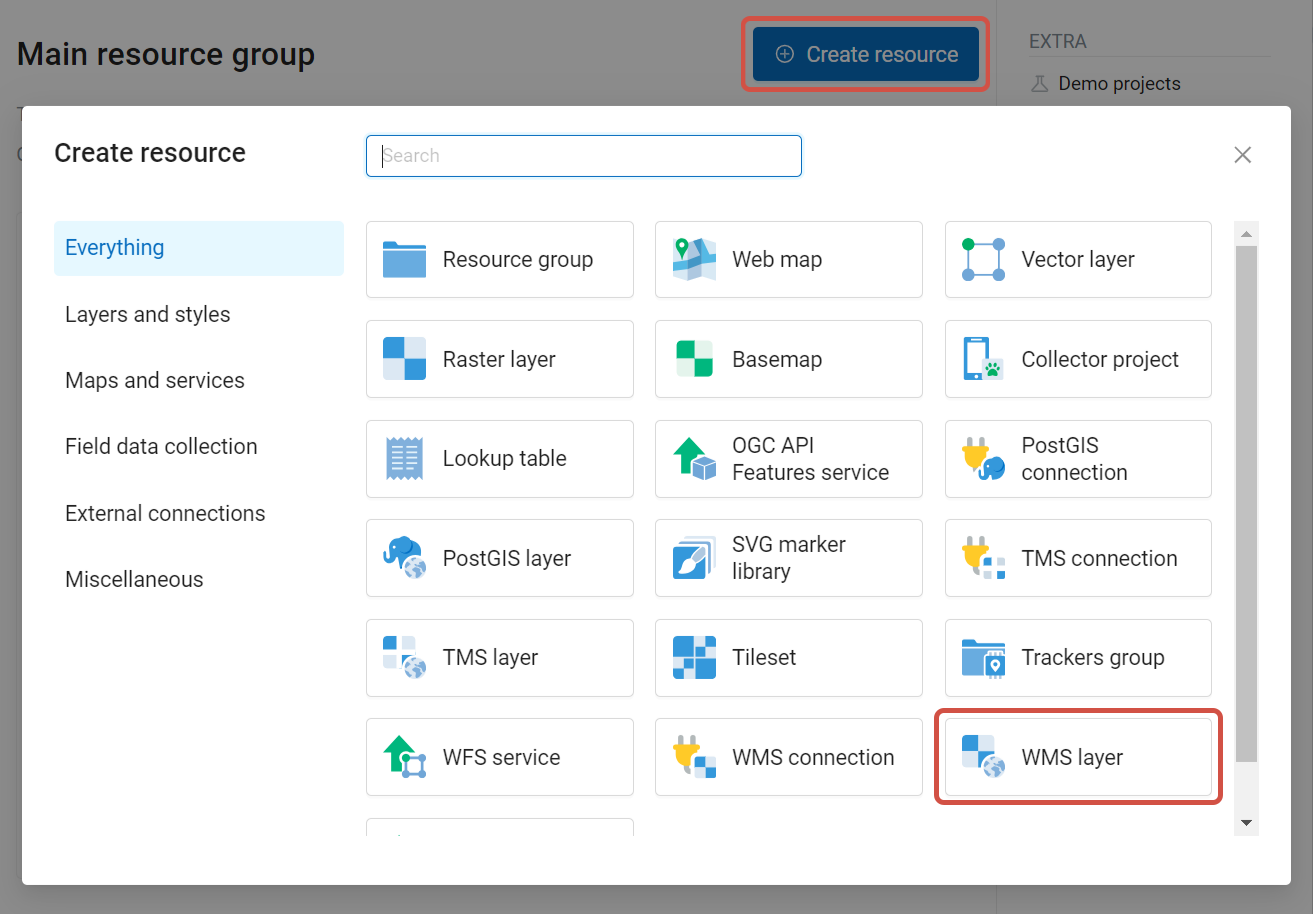
Pic. 7.189. Selecting “WMS layer” resource type
Enter display name that will be visible in administrator interface and in the map layer tree.
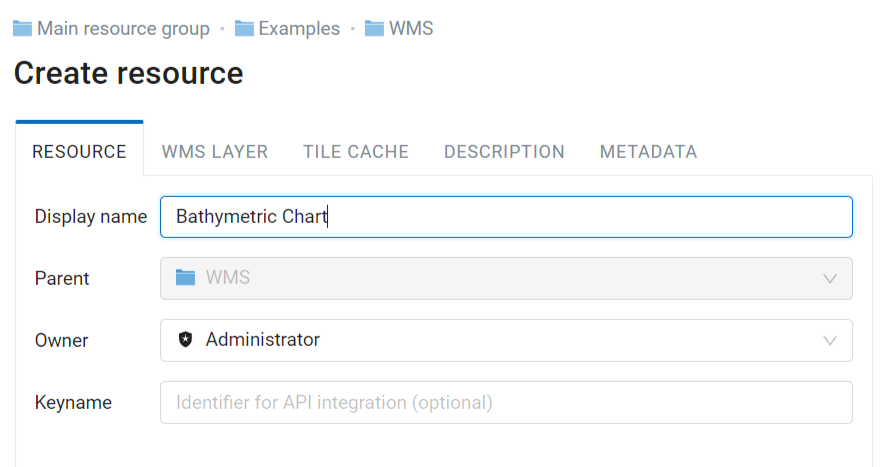
Pic. 7.190. WMS layer name
Tile cache settings are described in details in this section.
Switch to the “WMS layer” tab, which is presented on admin_layers_create_wms_layer_parameters and perform the following steps:
Select the WMS connection that was created earlier.
Select the appropriate MIME-type from the dropdown list.
Select the required layers from the list by clicking the underlined names. You can select several layers.
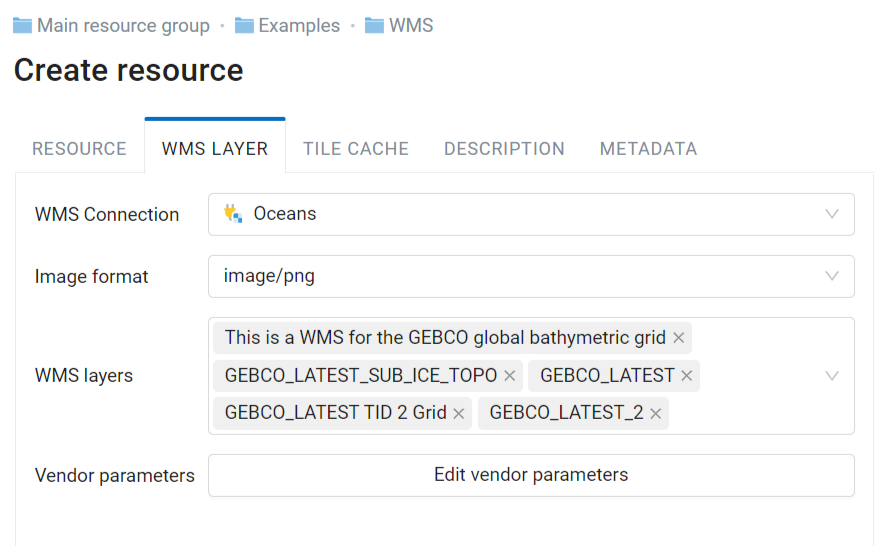
Pic. 7.191. WMS layer parameters tab

Pic. 7.192. Selecting WMS connection
In the last tab you can add vendor parameters. These are special query settings for additional functions. They vary depending on the WMS provider.
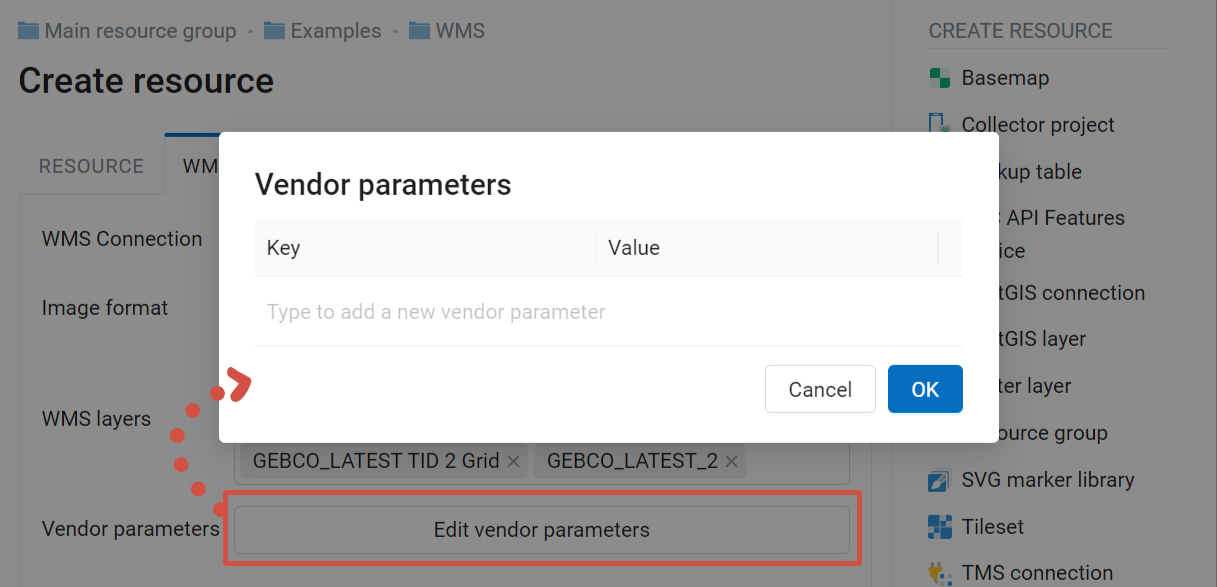
Pic. 7.193. Vendor parameters of the WMS layer
Also you can add Description and metadata.
After setting up all necessery parameters, click Create.
Warning
Identification requests to external WMS layers from Web Maps are not supported yet.
7.16.3. TMS
To add data from external sources using TMS protocol, first create TMS connection.
Note
Data uploaded to NextGIS Web, can also be added to external application via TMS.
7.16.3.1. TMS connection
To add a TMS layer, you first need to create a TMS connection. Click on Create resource button and select TMS connection (see TMS_connection_create_en).
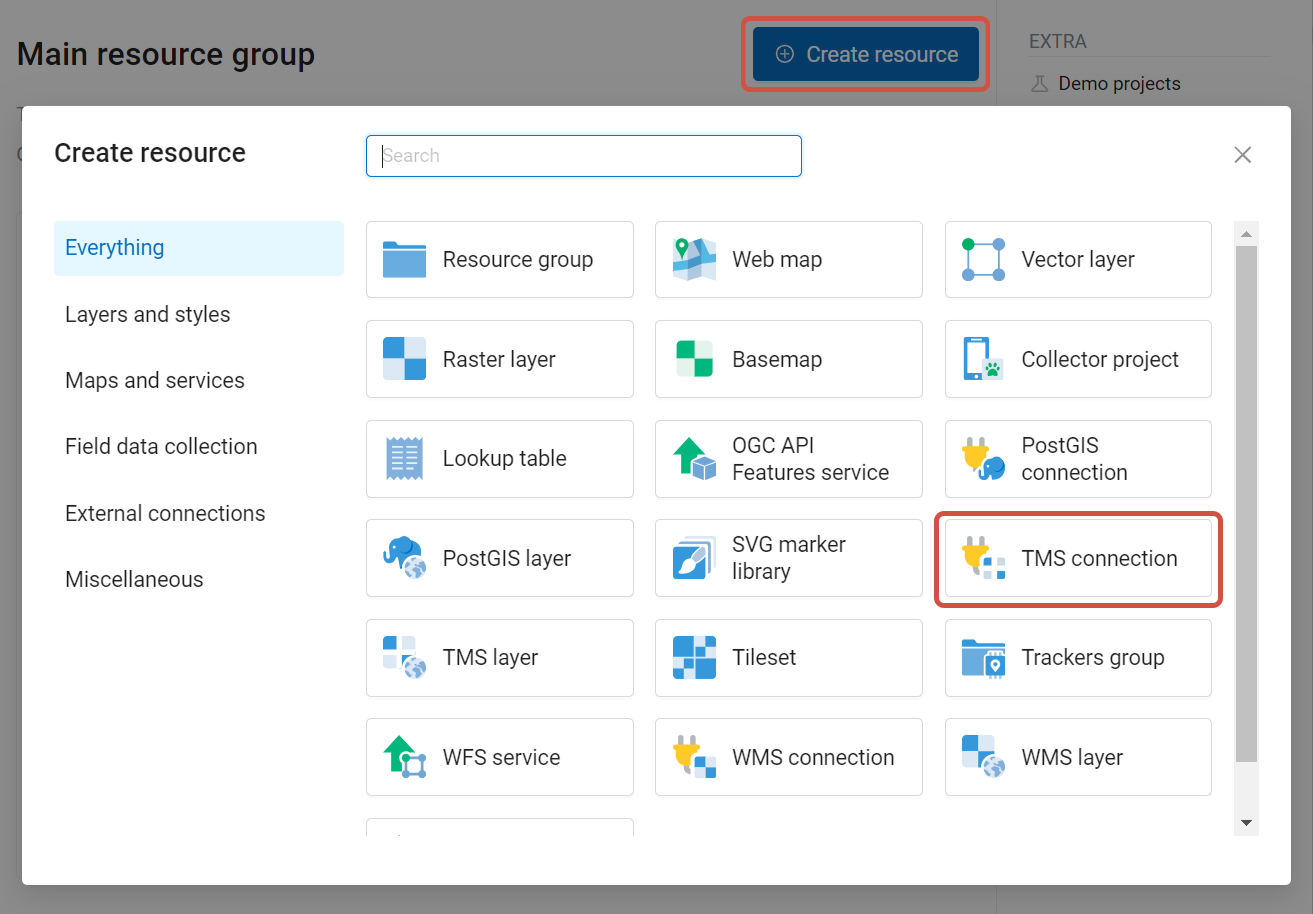
Pic. 7.194. Selecting TMS Connection resource type
Enter the connection name that will be displayed in the administrator interface (see TMS_connection_name_en).
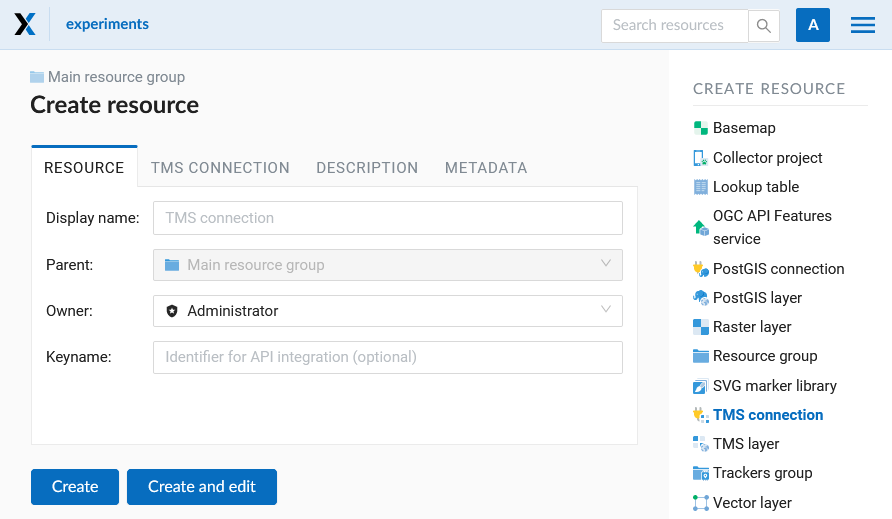
Pic. 7.195. TMS Connection Resource Name
Also you can add Description and metadata.
On the TMS connection tab you need to select the way to connect to the TMS server - custom or via NextGIS GeoServices (see TMS_connection_type_en).
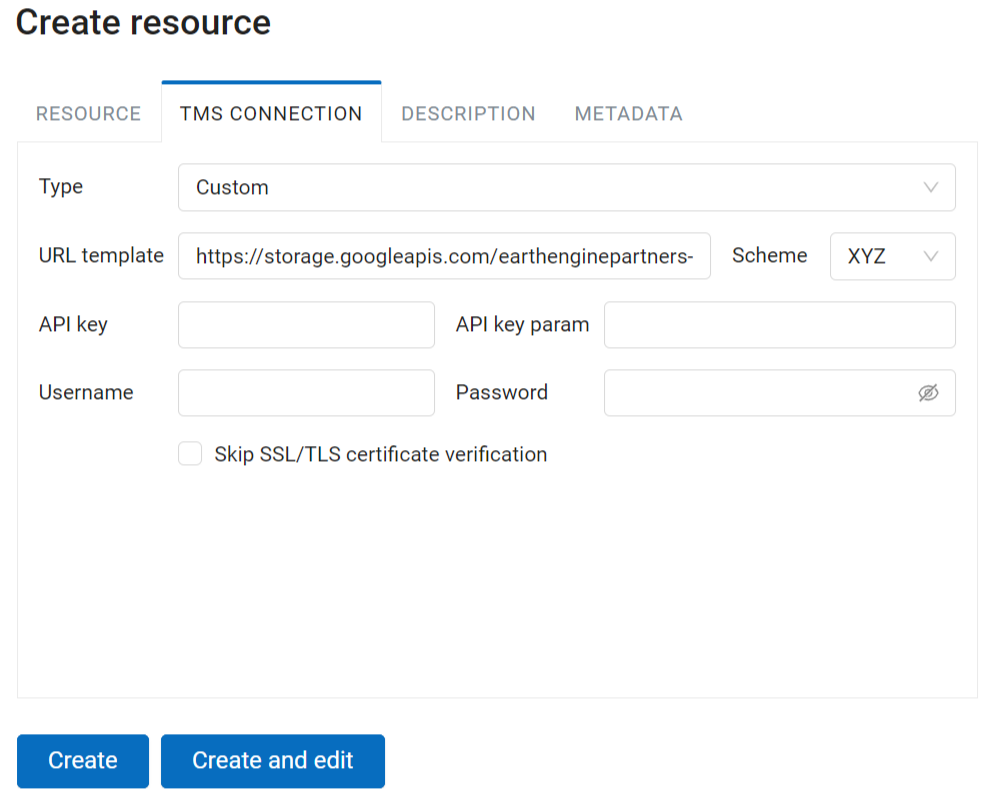
Pic. 7.196. Configuring TMS Connection
In the case of a custom connection method, the user must specify the URL template, API key parameters if needed and the tile scheme used. For NextGIS GeoServices, only a custom API key is specified. After filling in all fields click Create to complete the process of creating a TMS Connection resource.
7.16.3.2. TMS layer
TMS layer resource is created using previously created TMS Connection. Click on Create resource button and select TMS layer (see TMS_layer_create_en).
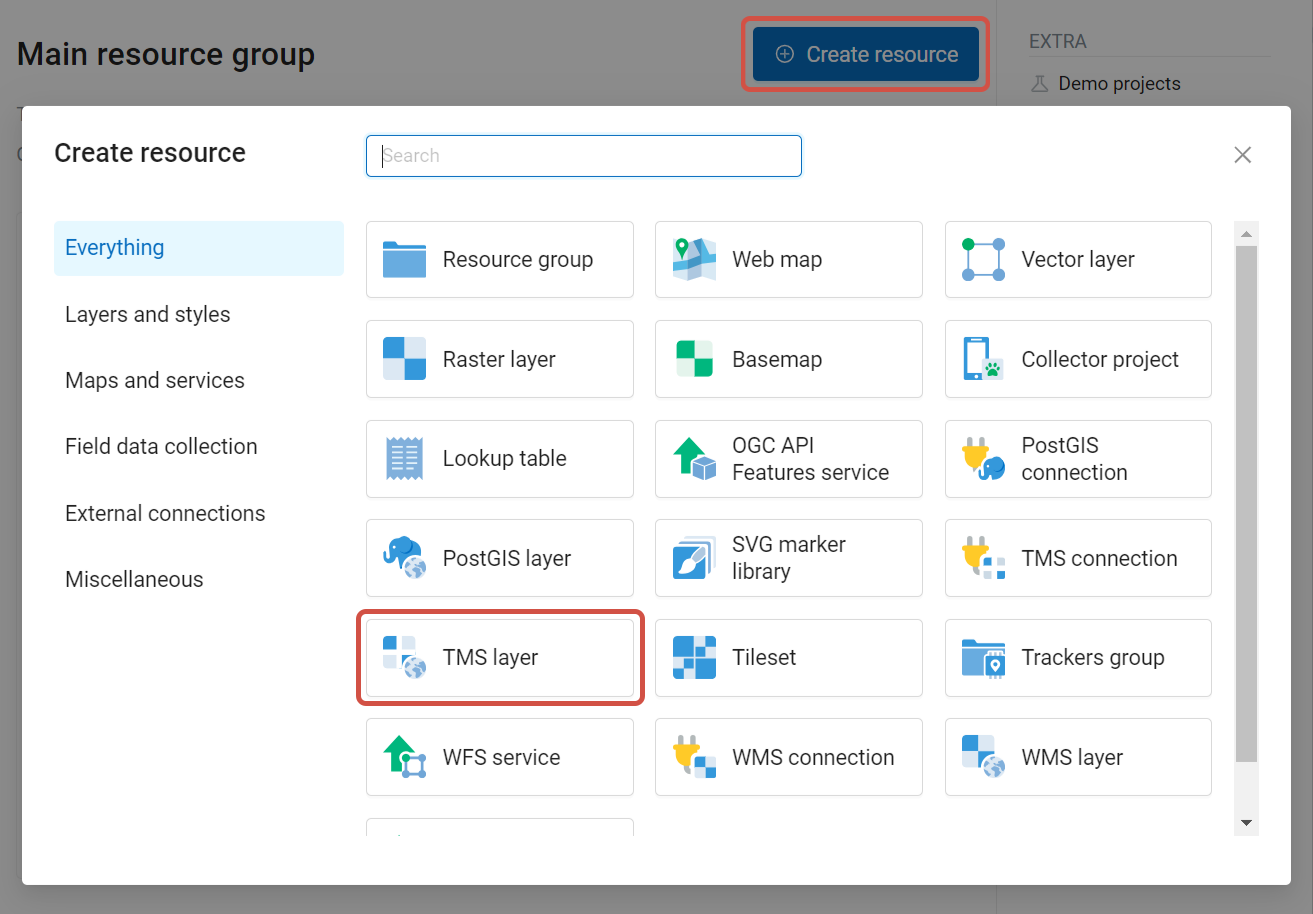
Pic. 7.197. Selecting TMS layer resource type
Enter the name that will be displayed in the administrator interface (see TMS_layer_name_en).
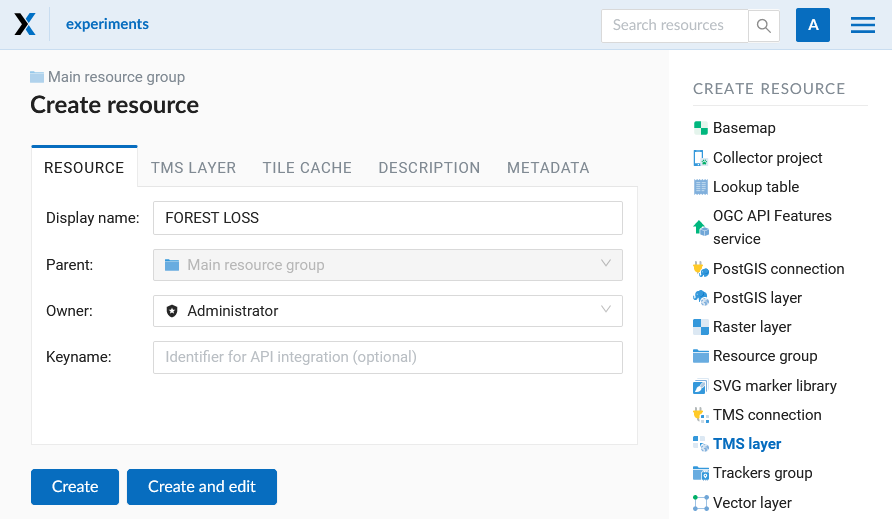
Pic. 7.198. TMS layer name
Caching provides faster rendering of Web Map layers. Tile cache settings are described in details in this section.
The main display settings are on the TMS layer tab (see TMS_layer_settings_en):
TMS connection - select a TMS connection resource that was created earlier;
The range of zoom levels for data display;
The extent in degrees;
Tile size in pixels.
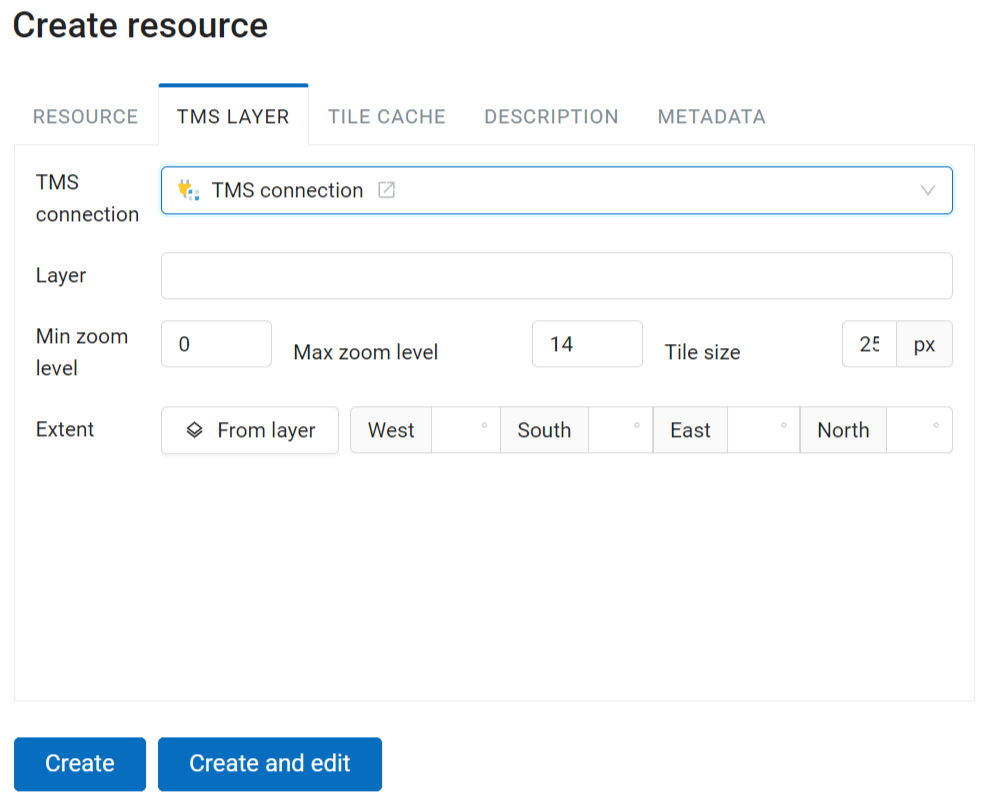
Pic. 7.199. TMS layer settings
After creating a TMS layer, the user can add it to the Web Map to display. No style is needed.